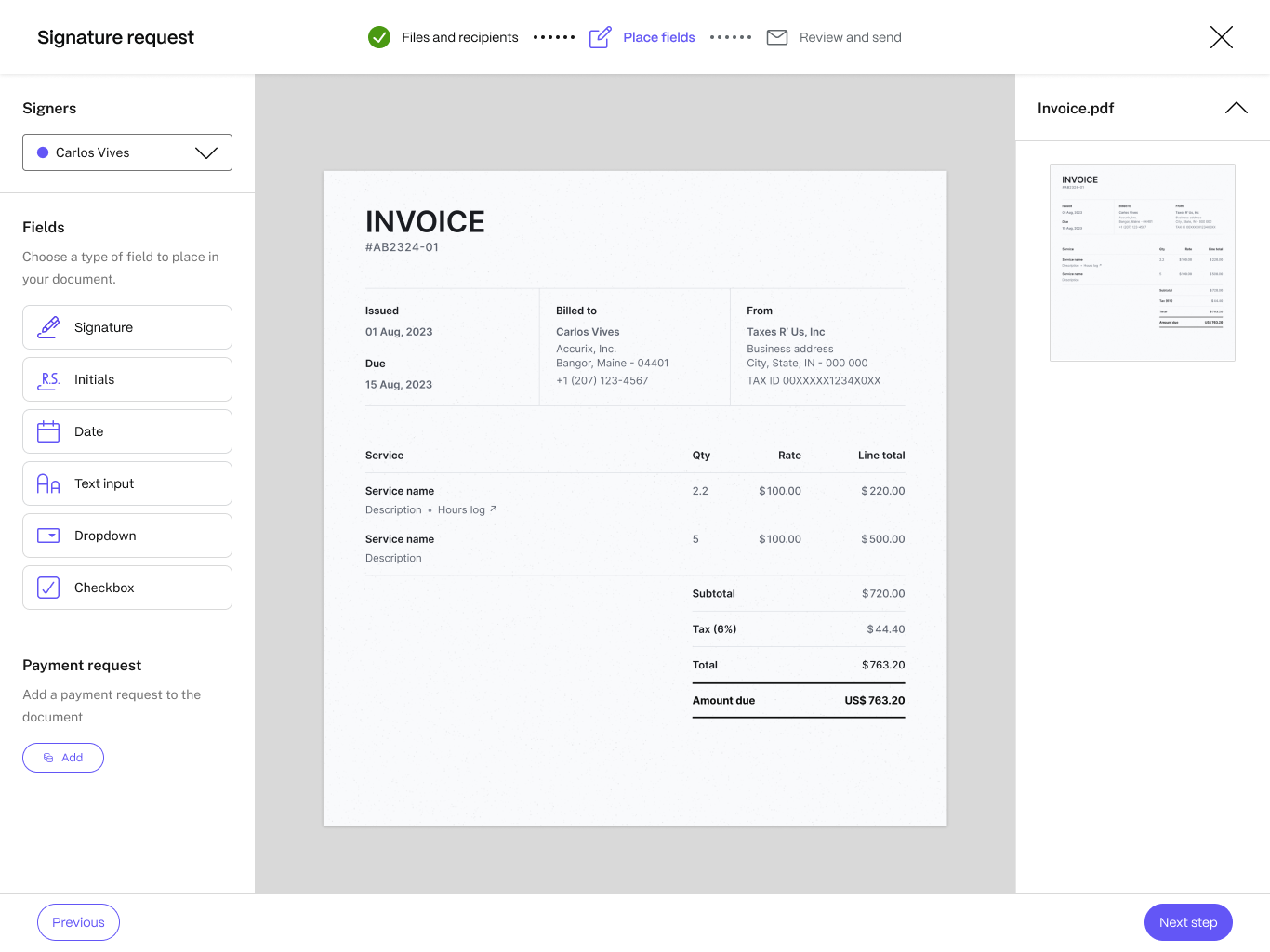ShareFile
Enhancing functionality in the content collaboration space
ShareFile is a content collaboration tool that has evolved significantly over the past 20 years. While still offering secure file sharing, it now supports a broad range of document-related tasks and workflows. As part of this evolution, I led the design and strategy for the Solutions Catalog, which includes both billing functionality and customizable templates. These two initiatives were executed concurrently and went from discovery to in production in Q3 of 2024.
Overview
ShareFile catalog showing solutions page filtered by industry
As ShareFile grew in a competitive market, agility became crucial. Features that weren’t initially planned for quickly became necessary to stay relevant. One such feature was the Client Billing solution, developed in response to user workarounds. Before this feature, service providers added text fields to shared documents to ask clients for credit card information, which was insecure and inefficient. The Business Solutions triad (product management, engineering, and design) prioritized creating an invoicing feature.
The Challenge
Create signature request
This evolved into the Client Billing solution found in the ShareFile Solutions Catalog. Other solutions in the catalog, like those for tax and legal sectors, are tailored for specific industries. These solutions use templates to standardize document exchanges—such as client questionnaires for tax or legal services. While many users had similar needs, customization became key to addressing the unique requirements of different clients.
In software development, time is always limited and everything is a priority. Design often competes for more time to fully understand the problem. Two weeks of discovery helped us conduct competitive analysis and user interviews to set expectations and identify what users wanted compared to other platforms. We also canvassed internal components and patterns that could be reused in the design.
I designed the Client Billing solution using the existing side drawer component to initiate payment requests and a data table to organize them. This required collaboration with the components team to adapt the data table to our needs. The solution was designed to be flexible, serving all sectors.
The Approach
Creating a payment request in the client billing solution
For solution configuration, I added an option to edit templates— the content within each document and which documents comprise a template.
Editing a solution template
Each feature went through multiple iterations, informed by internal reviews + feedback and external unmoderated user testing. These tests included task completion and surveys that produced System Usability Scale (SUS) scores.
SUS score
94.1
Usability score
94.0
Learnability score
94.3
The solution configuration feature is now in production and widely used. It allows for the necessary flexibility to address user nuances without needing to recreate templates entirely, which has been well received.
The Client Billing solution remains in Beta while we develop a key enhancement: the ability to collect a signature with payment. The design is complete, and development is in progress.
These initiatives contributed to ShareFile’s impressive growth, with a net retention rate above 100% and $250 million in annual recurring revenue (ARR), marking a 46% year-over-year increase.
When introducing new capabilities, there can be a rush to release something rather than ensuring it truly meets user needs. While time to innovation is important in software development, it’s equally critical to deliver features that fundamentally address user needs. Both initiatives successfully achieved this while staying true to ShareFile’s principles of secure and compliant content collaboration.
Recognition: “Greg quickly jumped into a new 0-to-1 project right after joining the team. Despite still familiarizing himself with the business, our customers, and users, he successfully delivered a version 1 that drives customer value and met our 90-days to innovation target. He never settles for the first idea; instead, he explored multiple concepts before narrowing down to the best solutions. His ability to embrace the inherent messiness of a customer-centered practice and thrive in uncertainty has led to innovative outcomes that align with our goals.” - Ivan E., Director of Design











